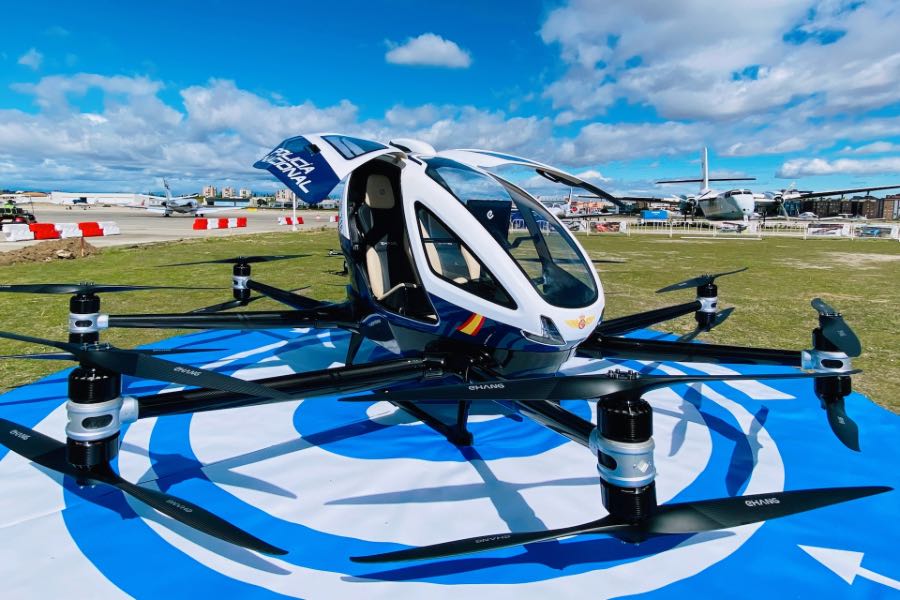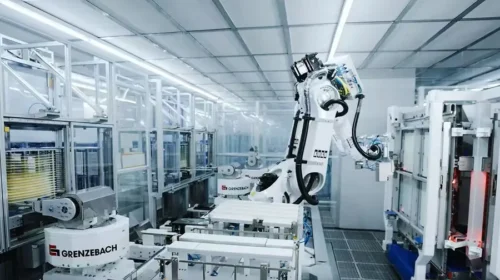EHang Encounters Capital Headwinds as Its Air Taxis Stay Grounded

A new fundraising highlights the company’s dwindling cash as it remains in the red despite progress in commercializing its aerial vehicles
Key Takeaways:
- EHang has signed a deal to raise $10 million by issuing new shares to a Qingdao government entity, and could raise another $10 million from the same source
- The company’s aerial vehicles are moving towards commercialization, nearing receipt of a safety certificate in China
By Warren Yang
EHang Holdings Ltd. (HANG.US) is working hard to make futuristic flying cars reality. But it’s flying into some capital headwinds in that process, potentially leading some investors to refrain from betting too big on the company.
Last Friday, EHang — a maker of autonomous aerial vehicles (AAVs) that can carry passengers or deliver cargoes — said it formed a new “strategic partnership” that immediately brought in new capital. The tie-up will see Qingdao West Coast New Area, a government body from the northeastern city of Qingdao, provide EHang with $10 million in fresh capital by buying new shares in the company. EHang will sell the shares for the average closing price of its American depositary shares (ADSs) for the 30 trading days through last Tuesday.
While the deal won’t close until the first quarter of 2023, EHang has already received the yuan equivalent of the amount and plans to use the funds as working capital and for general purposes. And should it require more money, Qingdao West Coast New Area or its affiliates may invest another $10 million down the road.
Based on EHang’s latest market value of about $400 million, the investment could leave the Qingdao entity holding up to 5% of EHang’s shares.
While the new alliance sounds pretty good, the capital infusion also highlights the financial difficulties EHang, which was founded in 2014, is facing as it tries to commercialize its technology.
The company’s revenue for the July-September quarter dropped by more than a third year-on-year to just 8.2 million yuan ($1.2 million), though both amounts are from pilot projects and just a fraction of what EHang would need to survive over the longer term. Its net loss for the period widened about 6% to 77 million yuan.
As it remained mired in the red, EHang’s cash holdings amounted to less than $20 million at the end of September, down 44% from a year earlier. It doesn’t take a rocket scientist to calculate that at that rate of cash burn, it won’t be long before the company runs out of fuel to fund its operations without constant new injections from external sources.
Of course, a partnership with a local government can be a good thing because it can bring future business in addition to cash. But investors appeared to focus more on the negatives than this kind of positive, given that EHang shares dropped 8.6% after the latest announcement.
To be fair, money problems are quite common for businesses developing brand new products, especially high-tech ones like AAVs. Such products rarely generate meaningful revenue in their early stages, even as they chalk up millions or even billions of dollars in R&D costs.
Given that flying cars are still a thing of sci-fi movies, it’s impressive that EHang is making any sales at all. The company has been busy showcasing its vehicles in and outside China, which has yielded a strong pre-order book. Not all of EHang’s peers can boast similar achievements. For example, Lilium (LILM.US) in Germany, founded in 2015, posted negligible revenue through last year.
Big deals
EHang’s major deals to date include a pre-order of 100 units of its 216 series of air vehicles from Prestige Aviation in Indonesia in April, which followed agreements to sell 50 units of the same model each to Aerotree Flight Services of Malaysia and AirX Inc. of Japan.
The company is also in the final phase of meeting safety requirements of China’s Civil Aviation Administration (CAAC). This means EHang just needs to go through the last safety reviews to obtain the world’s first airworthiness certificate for unmanned aircraft systems to carry humans. The company is confident it can make that happen, given its long record of successful tests, including under extreme weather conditions, EHang CEO Hu Huazhi said earlier this month on a conference call to discuss the company’s third-quarter earnings.
And in October, EHang signed a preliminary agreement with Hong Kong Aircraft Engineering Co. Ltd., the aircraft engineering and maintenance subsidiary of Swire Group, parent of Cathay Pacific Airways (0293.HK), to cooperate in developing systems and maintenance services for EHang’s 216 vehicles.
Still, Ehang continues to face significant challenges. For one, the Covid-19 pandemic has hit the company hard, particularly because the tourism industry is one of its key target customer groups. As Beijing stuck to strict policies to eradicate Covid-19 infections, some of EHang’s buyers failed to complete payments for their orders, forcing the company to book provisions against those bills.
Ehang also blamed the recent resurgence of Covid cases in China for a drop in new orders in the third quarter. Travel restrictions under Beijing’s strict Covid-control policies have also slowed the regulatory approval process due to periodic inability by CAAC officials to conduct on-site checks.
The Chinese government started easing its Covid-19 rules earlier this month. But the resulting surge in cases has fueled fears of infections and reduced in-person contact even further, which could hamper EHang’s efforts to collect payments and win new deals in the short-term.
Regardless of how well the Chinese economy bounces back, the AAV business fundamentally is fraught with uncertainties because it’s so new. Regulations are a major hurdle. EHang needs to comply with complex new regulations not only at home but also in international markets where rules may differ vastly.
If the company overcomes such regulatory obstacles, its driverless products could still face difficulties winning acceptance from wary consumers. And even if its business booms, EHang could fall behind in product deliveries due to lack of mass production experience.
EHang shares currently trade at a lofty price-to-book (P/B) ratio of 14, compared to 1.9 for Lilium and 1.5 for XPeng Inc. (XPEV), a Chinese electric vehicle maker that has an affiliate developing flying cars. TuSimple (TSP.US), which is developing similar autonomous driving technology for trucks, trades at an even tinier P/B of 0.2 times, following a three-quarters decline in its stock price since late October amid ongoing turbulence in the company’s boardroom.
Ehang’s high valuation indicates that there’s still some optimism about the company’s prospects. But at the end of the day, its stock is down nearly 50% from its IPO price in 2019. And given its touch-and-go cash situation, investors may have good reason to sit tight until the company shows its business can really take flight.
To subscribe to Bamboo Works free weekly newsletter, click here






